Divide Russell Perennials: Prevent Spring Overcrowding
Is your Russell garden feeling a bit crowded? Spring is the perfect time to divide many perennials, revitalizing your plants and beautifying your space. Need a hand getting your garden beds in top shape? Request a free quote today!
Quick Guide to Dividing Perennials:
- **Why Divide?** Prevents overcrowding, rejuvenates plants, controls size, and gives you free plants.
- **When?** Early spring (for summer/fall bloomers) or early fall (for spring bloomers) in Ottawa.
- **Key Signs:** Dead centres (“donut hole”), reduced flowering, weak stems, clump too large.
- **How?** Dig up clump, separate roots (pull, pry with forks, or cut), ensure divisions have roots/buds, replant at same depth, water well.
- **Aftercare:** Consistent watering, mulch application, monitor for stress.
Introduction: Give Your Russell Perennials Some Breathing Room!
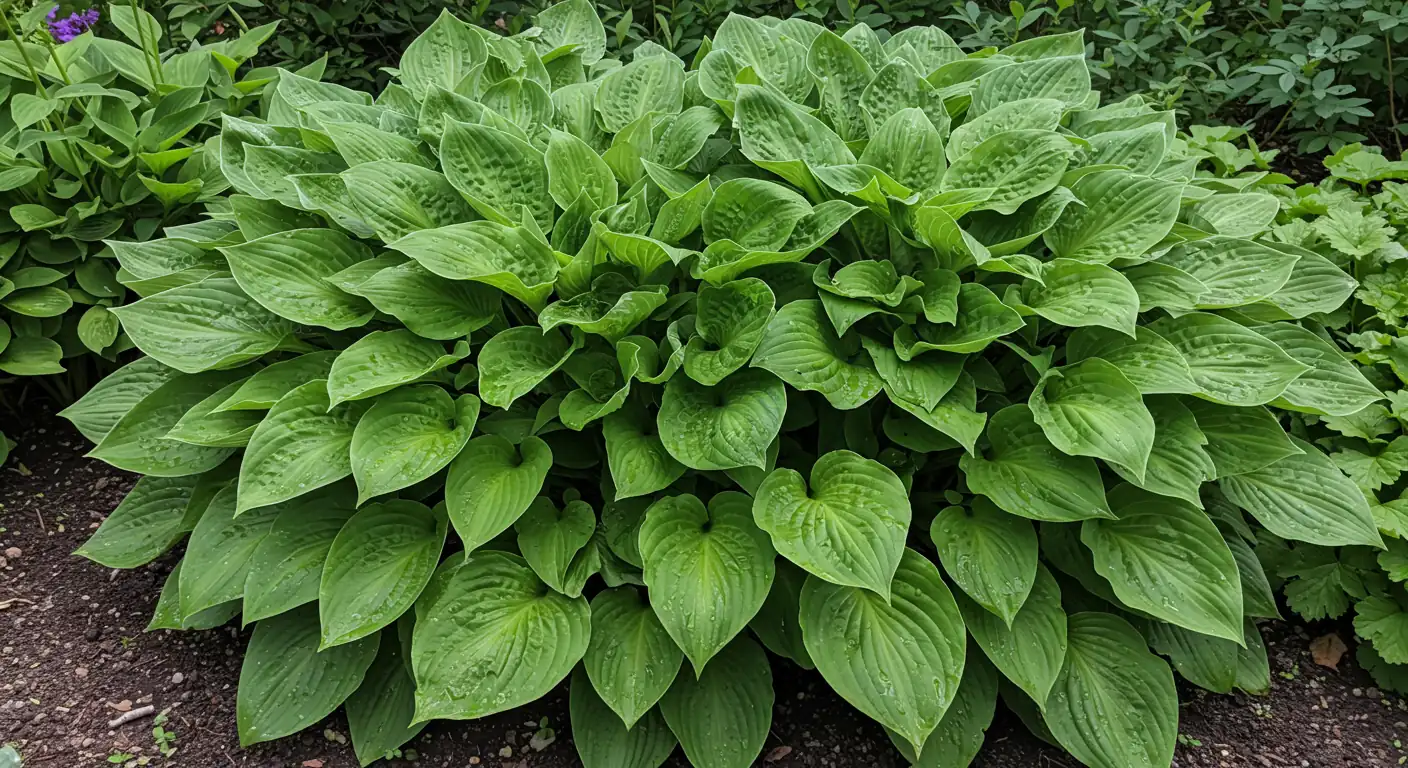
Hey there, fellow garden enthusiasts in Russell and across the Ottawa area! Ever look at your favourite patch of perennials – maybe those stunning daylilies or hostas – and feel like they’re getting a little *too* friendly with each other? You know, like they’ve gone from being happy neighbours to practically sharing the same coffee cup? It’s a common sight in established gardens!
Over time, those lovely clumps of perennials we planted grow bigger and bigger. While that initial growth is exciting, eventually, things can get overcrowded. Think of it like a party that’s gotten a bit too packed – nobody has room to breathe, let alone show off their best dance moves (or, in this case, their best blooms!). This garden congestion isn’t just about appearances; overcrowding can lead to weaker plants, fewer flowers, and centres that start to die out. It can even make plants more prone to pests or diseases, something none of us want in our beautiful Ottawa landscapes, whether you’re in Russell, nearby Embrun, or out towards Greely. Finding local garden support is easy, check out the Ontario Horticultural Association for clubs near you, or see what the Friends of the Central Experimental Farm offer.
But don’t despair! There’s a simple, effective, and even rewarding solution: *dividing your perennials*. It’s like giving your plants a gentle nudge apart, offering them much-needed personal space to thrive again. This process not only revitalizes the parent plant but also gives you *free* new plants to expand your garden or share with friends. Ready to give your green buddies some elbow room? Let’s dig in!
Why Bother? The Perks of Playing Plant Matchmaker (and Separator!)
Okay, so you’re looking at that big clump of Hostas in your Nepean garden, or maybe the Sedum that’s threatening to swallow the pathway, and thinking, “Digging that up sounds like *work*. Why bother?” Fair question! But playing plant matchmaker (and sometimes separator!) by dividing your perennials comes with some seriously sweet perks for your Ottawa garden. It’s not just about keeping things tidy; it’s about boosting overall *garden health* and *aesthetics*.
Here’s the scoop on why grabbing that spade is totally worth it:
- Give Your Plants a Spa Day (Rejuvenation!): Imagine wearing the same crowded shoes year after year. Eventually, your feet (or roots!) get cramped and unhappy. Dividing perennials, especially those with dead centres or dwindling flower power, is like giving them a fresh start. It reinvigorates the plant, encouraging robust new growth and more impressive blooms next season. It’s a key part of spring plant care, vital for keeping gardens vibrant from Barrhaven to the inner city. For tips tailored to springtime division, check out this advice on .
- Maintain Order in the Garden Court (Size Control!): Let’s be honest, some perennials get a little too enthusiastic and start elbowing their neighbours out of the way. Division keeps these enthusiastic spreaders in check, maintaining the balance and design of your landscaping. It prevents one plant from dominating a garden border and ensures everyone has their share of sunlight, water, and nutrients. Thinking about tidying up those edges? See how dividing fits into refining a . While spring is popular, don’t forget fall division works well for many plants too; this explains how.
- Instant Garden Expansion (Free Plants!): This is the perk everyone loves! Every piece you divide can potentially become a whole new plant. Suddenly, you have freebies to fill gaps in your garden, start a new bed, or share with friends and neighbours (plant karma is a real thing!). This propagation is also wonderfully eco-friendly – creating new life from existing plants instead of buying new plastic pots.
- Boost Plant Wellness (Healthier Growth!): Overcrowding isn’t just a space issue; it reduces air circulation, creating a cozy environment for fungal diseases and pests. Thinning the clump allows air to move freely, drying leaves faster and making it harder for problems to take hold. Healthy roots also mean better water uptake. Speaking of water, ensuring your newly divided plants (and the rest of your garden!) get enough without wastage is crucial for garden health. Leaky sprinklers can undermine your efforts, so it’s smart to learn how to .
So, dividing isn’t just a chore; it’s an investment in a healthier, more beautiful, and more abundant garden. If the thought of digging and splitting still feels a bit much, remember there are always professional Landscaping and Yard Care Services available to lend a hand!
Spring vs. Fall Division: Quick Comparison
Pros of Spring Division (Late April – Mid May)
- Full growing season for root establishment before winter.
- Cooler temps and moist soil reduce transplant shock.
- Ideal for mid-summer/fall bloomers (Hostas, Daylilies, Asters, Sedum).
Cons of Spring Division
- May sacrifice some current season blooms on divisions.
- Weather can be unpredictable (late frosts).
- Busy time for other garden tasks.
Pros of Fall Division (Sept – Early Oct)
- Warm soil and cool air is less stressful for many plants.
- Plant focuses energy on root growth, not top growth/flowers.
- Ideal for spring/early summer bloomers (Peonies, Irises, Bleeding Hearts).
- Good timing for garden cleanup, like an Osgoode Garden Clean Up Service might perform.
Cons of Fall Division
- Shorter window before ground freezes in Ottawa.
- Risk of frost damage if divided too late.
Key Signs Your Perennials Need Dividing:
- The Donut Hole: Centre of the clump is bare or weak.
- Fewer/Smaller Blooms: Plant isn’t flowering as vigorously.
- Floppy Stems: Plant struggles to support itself.
- Too Large: Clump is outgrowing its space or crowding neighbours.
- Overall Decline: Plant just looks less healthy than before.
Paying attention to these signs helps you decide the best time for your specific plants.
Timing is Everything: When to Divide Perennials in the Ottawa Climate
Alright, let’s talk timing! Figuring out *when* to divide your perennials here in the Ottawa area can feel a bit like predicting rush hour traffic on the 417 – it changes! Our unique climate (hello, Zone 5a/b!) throws us curveballs with late springs, early frosts, and sometimes surprising heatwaves. Getting the timing right is key to making sure your plant buddies bounce back strong.
So, when *is* the magic moment? Generally, you have two main windows: spring and fall.
Spring Division: The Early Bird Gets the Worm (and Roots!)
- When: Aim for early spring, just as new growth starts peeking out of the ground but before the plants get too big. Think late April to mid-May, depending on how quickly things warm up.
- Why: Dividing in spring gives the new transplants the entire growing season to establish strong roots before facing their first Ottawa winter. The soil is usually moist, and the temperatures are cool, reducing transplant shock.
- Best For: Plants that bloom in mid-summer or fall, like Hostas, Daylilies (though they’re tough cookies and often tolerate fall division too!), Asters, Sedum ‘Autumn Joy’, and ornamental grasses. Dividing them now means you might sacrifice *some* of this year’s bloom potential on the divisions, but the mother plant often benefits.
Fall Division: The Cool Down
- When: Aim for late summer to early fall, typically September to early October. You want to give the roots at least 4-6 weeks to settle in before the ground freezes solid (which can happen surprisingly early sometimes!). Avoid dividing too late.
- Why: The soil is still warm, but the air is cooling down, which is less stressful for many plants than the summer heat. The plant can focus its energy on root growth instead of producing flowers or lots of top growth.
- Best For: Spring and early summer bloomers like Peonies (though they *really* prefer fall!), Irises, Bleeding Hearts, and Primulas. Dividing them after they bloom lets them recover and set buds for next year. A tidy fall division can be part of a thorough yard prep, much like the work done by an Osgoode Garden Clean Up Service getting beds ready for winter.
The Golden Rule (Mostly): Divide plants in the season *opposite* to when they put on their big floral show. Spring bloomers = fall division. Fall bloomers = spring division. Summer bloomers? They’re often flexible, but spring is usually preferred.
Listen to Your Plants: Signs They Need Space
Your plants will often tell you when they’re ready for a split. Keep an eye out for:
- The Donut Hole: The centre of the clump looks dead or sparse, with all the healthy growth around the edges.
- Flower Power Failure: The plant produces fewer or smaller blooms than it used to.
- Floppy Town: Stems become weak and flop over easily, even if they aren’t typically floppy plants.
- Too Big for Their Britches: The clump is simply getting too large for its designated spot, maybe crowding out neighbours in your Nepean garden border.
Ottawa Considerations:
Because our spring can arrive late and fall can turn cold quickly, err on the side of dividing *earlier* within the recommended window rather than later. A sudden cold snap after a late fall division can be tough on new transplants. Getting timing right for division is as key to a lovely garden as scheduling your Seasonal Lawn Care is for a lush lawn. And if the weather looks particularly wild, or the task just feels like too much alongside other chores like checking your property after winter, remember that professional Ottawa Property Cleanup Service providers can expertly handle the timing and the digging. Sometimes, fall division pairs perfectly with leaf collection and general tidying; combining tasks or using an Marionville Property Cleanup Service can streamline your efforts. If you’ve worked with us before, access your details via the Customer Portal.
It might be helpful to create a simple timing chart for your specific perennials! But by following these guidelines and watching your plants, you’ll get the hang of it. Give your plants the space they crave, and they’ll reward you – it’s like they’re sending a big floral Heartfelt Thank You with healthier growth and better blooms!
Optimal Division Windows for Common Perennials (Ottawa Climate)
Hostas
Daylilies
Asters
Peonies
Irises (Bearded)
Note: Chart represents general preference. Height indicates suitability (higher = better season). Many perennials are flexible.
Get Your Gear Ready: Tools and Prep for a Smooth Separation
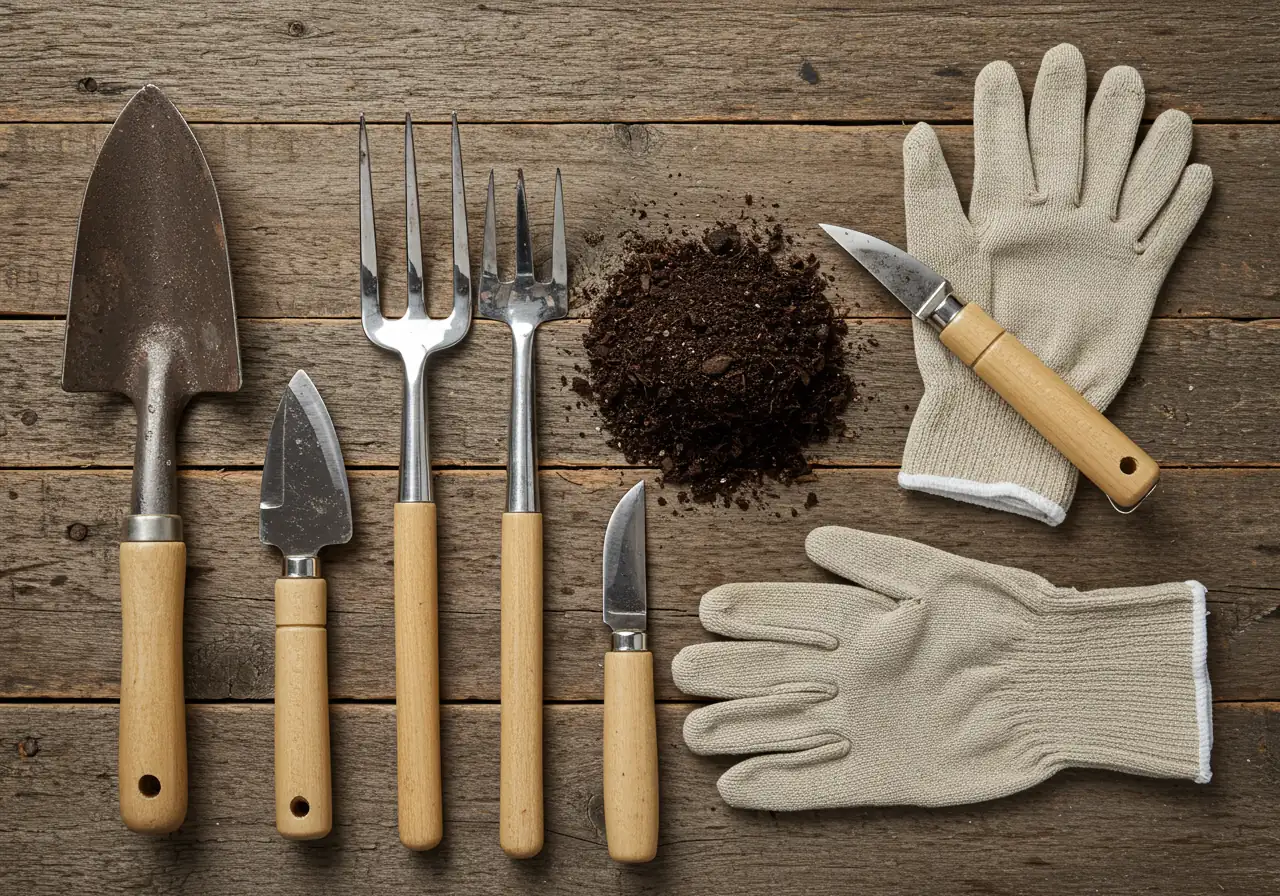
Alright, let’s talk logistics! Trying to divide perennials without the right gear is like trying to spread cold butter with a fork – frustrating and messy. A little prep goes a long way towards making this gardening task easier and more successful. Think of it as setting the stage for a smooth separation (for your plants, of course!).
First up, your toolkit. Having these items handy will make the job much smoother:
- The Dynamic Duo: A sturdy spade (the one with the flat edge) and a digging fork (sometimes called a garden fork). The spade helps cut around the clump, and the fork is fantastic for lifting the whole root ball with less damage.
- The Separator: Depending on the plant’s roots, you might need a sharp gardener’s knife, an old serrated bread knife (seriously!), or even a small pruning saw for tough, woody crowns. Sharp and clean is key here! Dirty tools can spread disease, so give them a quick wipe with rubbing alcohol or a bleach solution (1 part bleach to 9 parts water) before you start and between different plants.
- The Catch-All: A tarp or wheelbarrow is super helpful for containing the soil and plant bits, making cleanup much easier. If you’re dealing with a lot of garden debris beyond just the division, remember that professional help like a Metcalfe Property Cleanup Service can handle the bigger tidying jobs.
- New Homes: Have pots ready if you plan to share divisions, or have the new planting spots prepped. Don’t forget plant markers – you might think you’ll remember what’s what, but trust us… label them!
Next, let’s prep the ground. You’re not just digging plants *out*; you’re often putting divisions back *in* or planting them elsewhere. Give those new divisions the best start! Many gardens in Ottawa, from Manotick to the suburbs, deal with heavy clay soil. While it holds nutrients, it can be dense and drain poorly. Before replanting, loosen the soil in the new spot and amend it generously with compost or other organic matter. This improves drainage and gives roots an easier time establishing. Think of it like preparing a perfect nursery bed – getting the Soil Preparation right is fundamental, whether you’re dividing existing plants or considering adding completely new features with Professional Garden Installation Services. Good soil prep now leads to impressive Garden Transformations later.
Finally, prep yourself! Wear sturdy gardening gloves, consider a kneeling pad or knee pads (your future self will thank you!), and stay hydrated, especially if it’s warm. Dividing perennials can be surprisingly physical work.
Taking these few preparation steps makes the whole process less of a chore and sets your beloved perennials up for success in their new spaces. If planning and prepping the work feels overwhelming, knowing you can provide Feedback on Your Project Estimate ensures any professional help you seek is perfectly tailored to your needs. Prepare well, and your plants will offer a big floral Heartfelt Thank You next season!
The Main Event: Your Step-by-Step Guide to Dividing Like a Pro
Okay, deep breath! You’ve timed it right, gathered your tools like a *gardening* ninja, and prepped the landing zones. Now for the main event – the actual dividing! Don’t worry, it’s less like plant surgery and more like helping your leafy pals move into roomier apartments. Let’s get those *perennials* split like seasoned pros using this timeline:
Step 1: The Gentle Extraction
Water plant beforehand. Dig widely around the clump with spade/fork. Lift entire root ball onto a tarp. Gently remove loose soil.
Step 2: Choose Division Method
Inspect roots. Fibrous: Pull apart or use two forks back-to-back. Dense/Woody: Use a clean, sharp knife/saw to cut sections with roots & buds. Discard old centres.
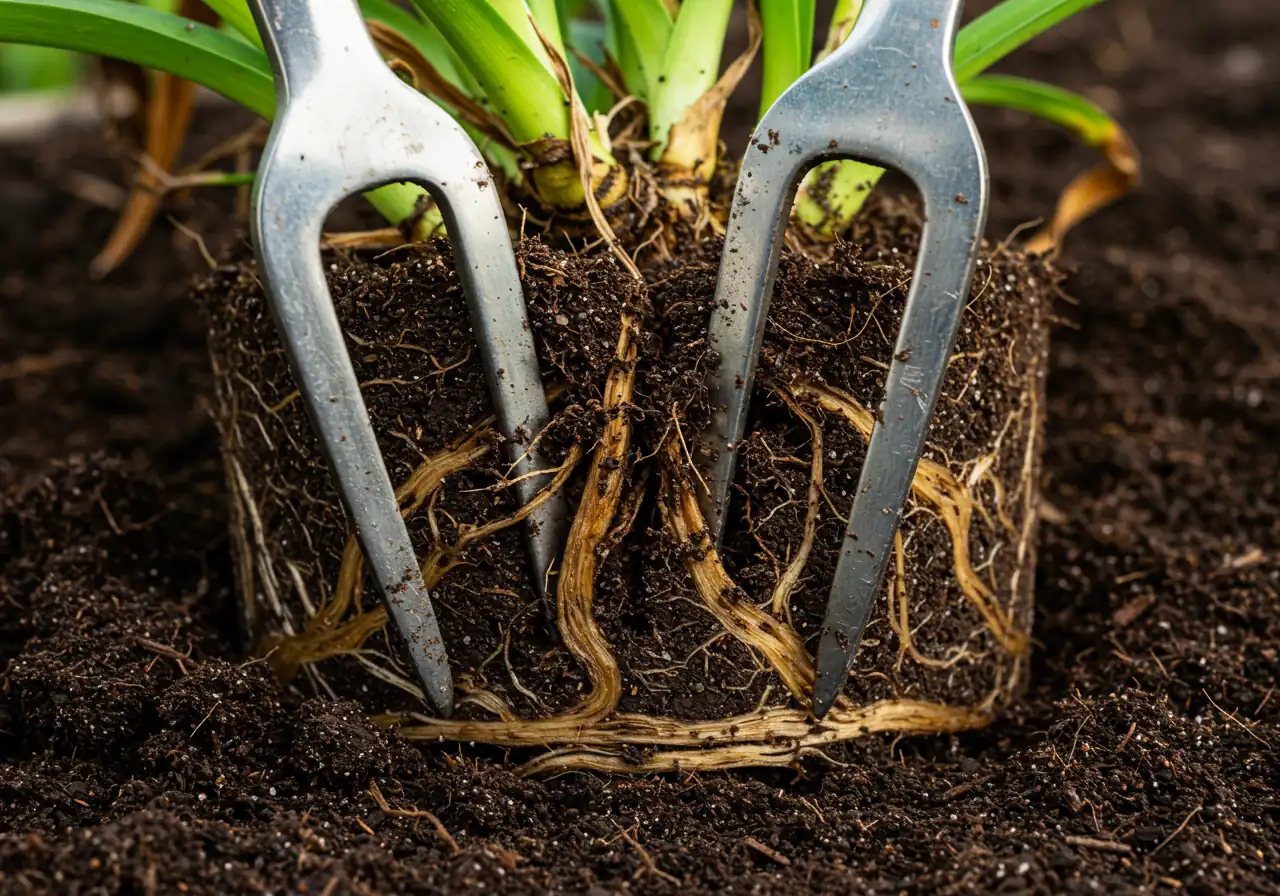
Step 3: Quick Tidy-Up
Trim damaged roots. Cut back foliage by about half, especially if dividing in warmer weather, to reduce stress.
Step 4: Welcome Home! (Replanting)
Dig wide holes. Mix compost into backfill soil. Plant division at the *same depth* as before. Backfill gently, firming soil.
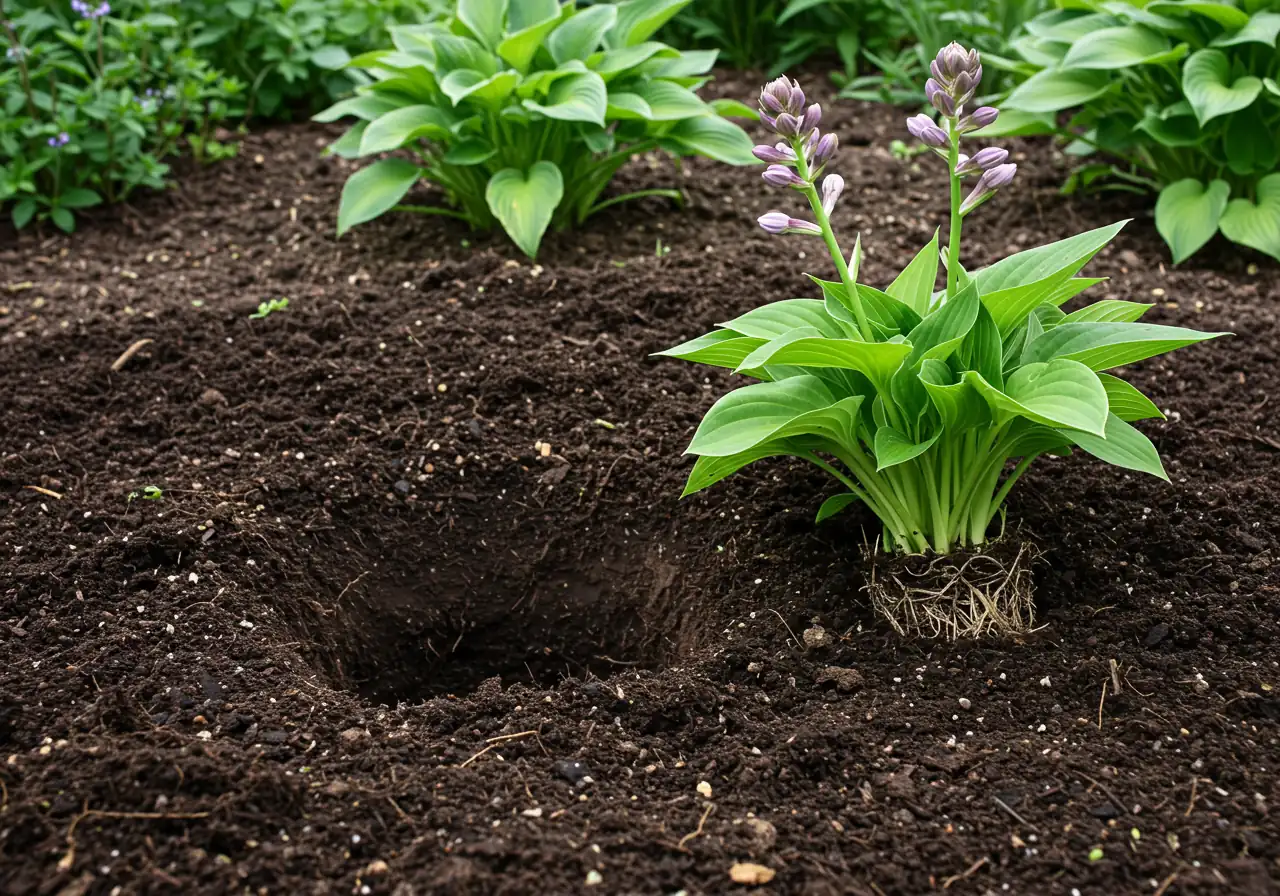
Step 5: Water & Mulch
Water thoroughly to settle soil. Apply 2-3 inches of mulch (avoiding stems). Keep consistently moist for several weeks.
And that’s it! You’ve successfully divided your perennials. If this process felt a bit much, or if you’re dealing with a whole yard’s worth of divisions and cleanup that feels more like a job for a Marionville Yard Cleanup Service, don’t hesitate to reach out. We understand that not everyone has the time or inclination for major *gardening* projects. If you’d like professional help, you can always Contact Us for More Information. We outline our service commitments in our Company Terms and Conditions, ensuring clarity from the start. And if you’ve received an estimate from us previously, we welcome your thoughts via our Estimate Feedback Form. Give your newly divided plants some TLC, and watch them flourish! Perhaps even document your own Garden Transformations!
Aftercare TLC: Helping Your New Divisions Thrive in Ottawa
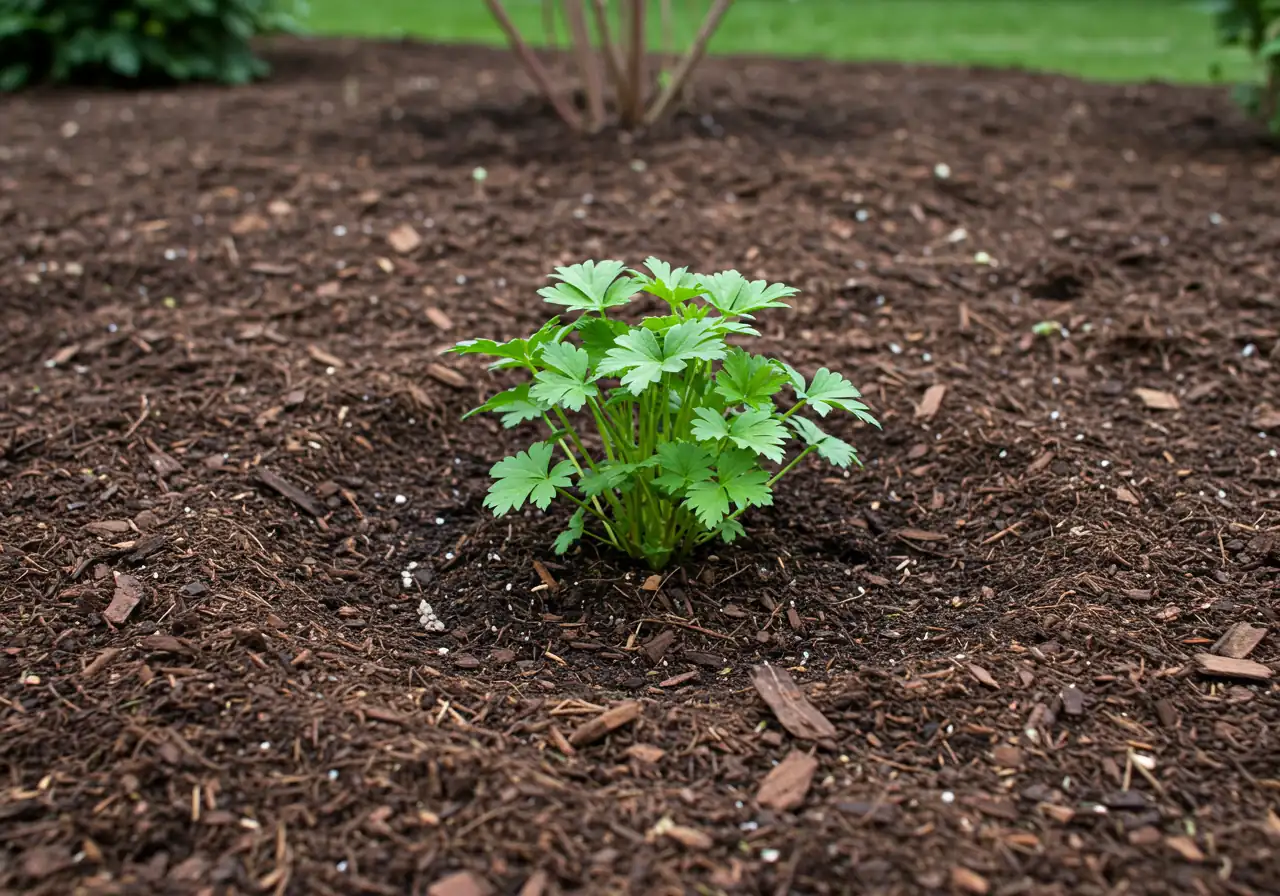
Okay, you did it! You bravely tackled the division, and now you have lovely new (or newly spaced) perennials ready to settle into their spots. High five! But the job isn’t quite done yet. Just like bringing home a puppy, these little guys need some tender loving care, especially right after the move. Giving them good aftercare helps them overcome the stress of being uprooted and ensures they establish strong roots for future gardening glory in our unique Ottawa climate.
Water Wisely: The Thirst is Real
Your newly divided plants are thirsty! Their root systems are smaller and slightly traumatized, making it harder for them to slurp up water initially.
- Deep Drinks: Water them deeply right after planting to settle the soil around the roots.
- Stay Consistent: For the first few weeks, keep the soil consistently moist but not waterlogged. Think damp sponge, not swamp. Check every couple of days by poking your finger an inch or two into the soil near the plant base. If it feels dry, it’s time for a drink. Overwatering can be just as bad as underwatering, especially in Ottawa’s sometimes heavy clay soil.
- Eco-Friendly Tip: Water early in the morning. This allows the foliage to dry before nightfall, reducing the risk of fungal diseases, and minimizes evaporation during the heat of the day. Watering deeply less often encourages deeper root growth compared to frequent shallow sprinkles. Check out the City of Ottawa’s tips on water-wise gardening.
Mulch Magic: The Cozy Blanket
Once you’ve watered, applying a 2-3 inch layer of organic mulch (like shredded bark, wood chips, or straw) around the base of the plant (but not touching the stems!) is like giving it a cozy blanket. Selecting the right material can make a difference; see our guide on Material Selection. Mulch helps:
- Retain soil moisture, meaning less watering for you.
- Keep soil temperatures more even – protecting roots from sudden heat spikes or early chills common around areas like Greely.
- Suppress weeds that compete for water and nutrients.
- Improve the soil structure over time as it breaks down.
Monitor Like a Hawk (A Friendly Hawk!)
Keep a loving eye on your divisions for the next few weeks. They might look a bit sad or wilty for a few days – that’s normal transplant shock. However, watch for:
- Prolonged Wilting: If wilting persists despite proper watering, something else might be amiss.
- Yellowing Leaves: Could indicate too much water, not enough nutrients, or other stress.
- Pest Patrol: Stressed plants can sometimes be more attractive to pests. Check undersides of leaves occasionally. Catching problems early is key.
- Ottawa Weather Whims:
- Frost Alert: If you divided in spring and a late frost threatens, cover the newbies overnight with a bucket, cloth, or floating row cover. Similarly, protect fall divisions from early hard frosts.
- Heavy Rain: Ensure water isn’t pooling around the base. If heavy rain washes away soil, gently add some back around the crown.
Don’t panic if a division doesn’t make it – it happens sometimes, even to seasoned gardeners! Just learn from it for next time. Most perennials are pretty tough cookies. If monitoring reveals larger issues across your yard, like widespread weeds or debris buildup after the dividing process, you might want help with a more thorough tidying. Sometimes a targeted service like the Marionville Garden Clean Up Service focuses on specific beds, while other times a full property clean up is needed to restore order. Consistent garden maintenance can prevent issues from escalating.
Giving your new divisions this extra attention sets them up for success. Need more personalized tips or feeling unsure about a particular plant? Feel free to Contact Us for personalized advice. We’re happy to help! You can learn more About Us and our commitment to healthy gardens on our site. Rest assured, any information you share when contacting us is handled according to our Privacy Policy. Happy growing!
Highlight Box: Division Do’s & Don’ts for Ottawa Gardens
Think of this as your cheat sheet for successful perennial splitting, perfect whether you’re gardening in Greely or anywhere else in our lovely region!
DO:
- DO Time it Smart: Remember the golden rule – divide spring/early summer bloomers in fall, and fall bloomers in spring, right here in Ottawa. Give them time to settle before extreme cold or heat hits.
- DO Use the Right Tools (Cleanly!): A sharp spade, garden fork, and maybe a knife are your friends. Clean them before and between plants to avoid spreading yucky stuff.
- DO Be Gentle(-ish!): Lift the whole clump carefully. Tease roots apart if possible, or make clean cuts through tougher crowns, ensuring each piece has roots and growth buds (“eyes”).
- DO Replant Right: Dig a nice wide hole, amend that Ottawa clay soil with compost (Soil Preparation is key!), and plant the division at the exact same depth it was before. Not deeper, not shallower!
- DO Give Aftercare: Water consistently after planting! A layer of mulch helps retain moisture and keep weeds down. Plus, finishing with proper mulching and edging around the bed makes your handiwork look extra sharp.
DON’T:
- DON’T Divide Stressed Plants: Avoid dividing when plants are wilting from heat or drought. Wait for cooler, moister conditions.
- DON’T Skimp on Soil Prep: Just sticking divisions back into compacted soil is setting them up to struggle. Loosen and enrich the planting hole first!
- DON’T Get Overwhelmed by Debris: Splitting large, mature perennials can generate a surprising amount of old roots, soil, and trimmings. Plan for cleanup as you go, or know that if the project grows, help is available for a full property clean up.
- DON’T Immediately Resort to Removal: If a perennial looks tired or too big, try dividing it before deciding to rip it out for other landscaping like sod installation. You might save a favourite plant and get freebies!
- DON’T Leave the Mess: Promptly dispose of discarded plant material (especially any diseased bits) and tidy the area. If you have a significant amount of garden waste, services like the Marionville Property Cleanup Service can specifically handle that kind of garden debris removal, keeping your space healthy and neat. Consider the City of Ottawa’s Green Bin program for disposal.
Follow these tips, and you’ll be dividing your perennials like a pro, keeping your Ottawa garden vibrant and full!
FAQ: Your Burning Questions About Dividing Perennials in Ottawa
Got questions about splitting those perennials? You’re not alone! It’s a common gardening task, but it can seem a bit daunting. Here are answers to some frequently asked questions we hear from folks around Ottawa.
Help! Can I just divide my perennials whenever I feel like it here in Ottawa? My schedule is chaotic!
Oh, if only plants ran on our schedules! While we admire your can-do spirit, timing really does matter, especially with our distinct Ottawa seasons. Trying to divide in the blazing heat of July stresses plants out immensely, and doing it just before the ground freezes solid in late fall doesn’t give roots enough time to settle in before winter hibernation. Your best bets are spring (just as new growth appears, usually late April-May) or early fall (September to early October). Think of it like booking a comfy travel window for your plants – spring and fall offer the smoothest ride for establishing new roots before facing extreme temperatures. Trying to rush it often leads to sad, struggling plants.
My garden bed in Barrhaven has that classic Ottawa heavy clay soil. Do I need to do anything special when dividing and replanting?
Ah yes, the famous Ottawa clay – great for pottery, slightly less fun for delicate new roots! Don’t despair, though. Clay soil actually holds nutrients well, but it can be dense and slow to drain. The key is amendment. When you dig the hole for your new division (or replant the parent), make it wider than you think you need. Mix a generous amount of compost, well-rotted manure, or other organic matter into the soil you removed before backfilling. This improves drainage and makes it easier for roots to penetrate. Think of it as fluffing up the pillow before your plant settles in! Keeping the surrounding bed tidy also helps, ensuring good air circulation. If amending multiple beds feels like a big job, specialized help like a Metcalfe Garden Clean Up Service can get those planting areas prepped perfectly.
Some of my hostas are enormous! Seriously, I might need a crane. Any tips for tackling these garden giants?
Ha! We hear you. Some perennials get really comfortable and grow into absolute units. Wrestling a massive, well-established clump can feel like an Olympic sport. First, make sure you have sturdy tools – a sharp spade and a strong digging fork are essential. For really tough, woody crowns, an old serrated knife or even a pruning saw can be your best friend (just be careful!). Sometimes, you don’t need to lift the entire behemoth out. You might be able to slice off sections from the edge with your spade while the main part stays put. If it truly feels overwhelming, or if the process creates a significant amount of debris and leftover plant matter across your property, don’t be afraid to call in reinforcements. A full Ottawa Yard Cleanup Service can manage the heavy lifting and the resulting mess, turning a daunting task into a finished one. Similarly, if the aftermath is mostly contained to the garden beds, an Ottawa Garden Clean Up Service can help restore tidiness.
I divided my favourite coneflowers last fall, and this year… hardly any blooms! Did I mess up?
Take a deep breath – you probably didn’t ruin your beloved coneflowers! It’s quite common for perennials to focus their energy on root recovery and establishment for the first season after being divided. Think of it like this: they just went through a major upheaval (imagine being pulled out of bed, split in half, and replanted!). Their priority shifts from producing flowers (which takes a lot of energy) to growing strong roots in their new spot. As long as the foliage looks healthy, give them time. They are likely putting energy below ground this year to reward you with even better blooms next year or the year after. Patience is a gardener’s best friend!
Okay, I got a little carried away dividing my daylilies in Manotick… Now I have dozens of little plantlets! What do I do with them all?
Ah, the delightful problem of “too much free landscaping material!” It’s a good problem to have. You’ve got options! First, see if any neighbours, friends, or fellow gardening enthusiasts would like some free plants – sharing the bounty is always nice! You can pot some up in simple containers to give away or nurture for filling gaps later. Identify the strongest, healthiest divisions to replant in your own garden. For the remaining weaker or excess bits, they can simply be added to your compost bin. If the sheer volume of extra plant material, combined with tidying up the division sites, feels like too much, remember that services like the Metcalfe Yard Cleanup Service can handle excess garden waste removal, leaving your Manotick yard neat and tidy.
Conclusion: Grow On! Enjoy Your Refreshed Ottawa Garden
Whew, you made it! See? Dividing those perennials wasn’t so scary after all, was it? Now you’re armed with the know-how to tackle those overgrown clumps and breathe new life into your Ottawa garden. Remember, giving your plants like Hostas, Daylilies, or Sedum some elbow room isn’t just about tidiness; it’s about promoting healthier roots, more vibrant blooms, and even getting free plants – a total win-win for any gardener from Nepean to Manotick!
By timing your divisions right (spring or fall!), using clean tools, and giving those new transplants a bit of TLC with watering and mulch, you’re setting them up for success in our unique climate. It’s amazing how this simple landscaping task can rejuvenate tired plants and refresh your entire garden space. So, don’t be shy – grab that spade and give it a go. Your perennials will thank you with lush growth and beautiful flowers.
Of course, we know life gets busy. If the thought of digging, dividing, and cleaning up feels like one task too many on your list, we’re here to help! Whether you need assistance with the division process itself or a full garden clean-up afterward, Clean Yards Ottawa offers professional landscaping and yard care services across the region, including Barrhaven and Greely. Find us easily on Google! Ready to transform your garden without lifting a finger? *Book an estimate today!* and let us handle the heavy lifting! Now, go forth and grow on!

